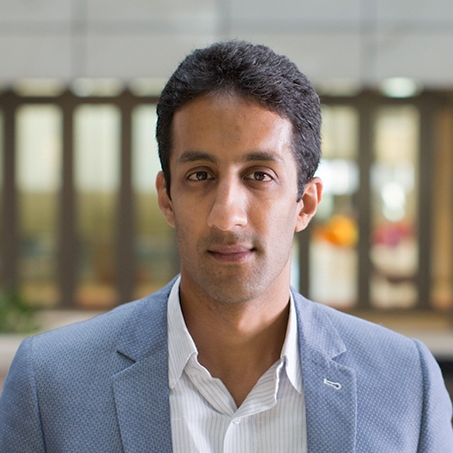
Mani Sarathy
Professor, Chemical Engineering
Physical Science and Engineering Division
Center membership :Clean Combustion
mani.sarathy@kaust.edu.sa
Combustion and Pyrolysis Chemistry (CPC) Group
Affiliations
Education Profile
- Postdoctoral training, Lawrence Livermore National Laboratory, U.S.A., 2010-2012
- Ph.D. Chemical Engineering, University of Toronto 2006-2010
- M.S. Chemical Engineering, University of Toronto, 2005-2006
- B.S. Environmental Engineering Chemical Specialization, University of Waterloo, 1999-2004
Research Interests
Professor Sarathy's research interest is in developing sustainable energy technologies with decreased net environmental impact. A major thrust of research is simulating the combustion chemistry of transportation fuels. He develops fundamental chemical kinetic models that can be used to simulate fuel combustion and pollutant formation in energy systems. Engine designers then use these chemical kinetic models to achieve various performance targets using computational simulations. In addition, these models can be used to determine how the chemical structure of a fuel affects pollutant formation. Professor Sarathy's research in combustion chemistry modeling includes quantum chemistry based kinetic rate calculations, comprehensive mechanism development, combustion cyberinfrastructure development, computer generated detailed and reduced mechanisms, and simulation of multi-dimensional reacting flows. In addition, he obtains data from fundamental combustion experiments to elucidate reaction pathways of combustion, and to generate experimental data needed to validate detailed chemical kinetic models. These experimental techniques include perfectly stirred reactors, plug flow reactors, and diffusion flames. The chemistry in these reactors is probed using advanced analytical chemistry techniques such as molecular beam time-of-flight mass spectrometry, laser absorption spectroscopy, Fourier transform infrared spectroscopy, and a variety of gas and liquid chromatography methods. The goal of Professor Sarathy's research is study conventional and alternative fuels (e.g., biofuels, synthetic fuels, etc.), so the environmental impact of combustion systems can be reduced. He also applies chemical kinetics expertise to study a wide range of chemical engineering systems including biomass energy, catalysis, and drinking water treatment.Selected Publications
- S.M. Sarathy, G. Kukkadapu, M. Mehl, W. Wang, T. Javed, S. Park, A. Elwardani, A. Farooq, M.A. Oehlschlaeger, A. Farooq, W.J. Pitz, C-J. Sung, Ignition of alkane-rich FACE gasoline fuels and their surrogate mixtures, Proceedings of the Combustion Institute, 2015.
- S.M. Sarathy, P. Osswald, N. Hansen, K. Kohse-Hoinghaus, Alcohol combustion chemistry, Progress in Energy and Combustion Sciences, 2014 N. Hourani*, J.T. Andersson, I. Möller, M. Amad, M. Witt, S.M. Sarathy, Atmospheric Pressure Chemical Ionization Fourier Transform Ion Cyclotron Resonance Mass Spectrometry for Complex Thiophenic Mixture Analysis, Rapid Communications in Mass Spectrometry, 2013.
- A.C. Davis, S.M. Sarathy*, A Computational Study of the Combustion and Atmospheric Decomposition of 2-Methylfuran, Journal of Physical Chemistry A, 2013
- S.M. Sarathy, S. Vranckx, K. Yasunaga, M. Mehl, P. Osswald, W.K. Metcalfe, C.K. Westbrook, W.J. Pitz, K. Kohse-Höinghaus, R.X. Fernandes, H.J Curran, A comprehensive chemical kinetic combustion model for the four butanol isomers. Combustion and Flame, 2012.

